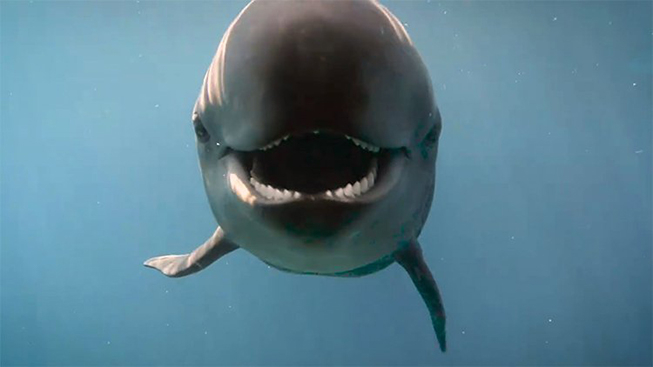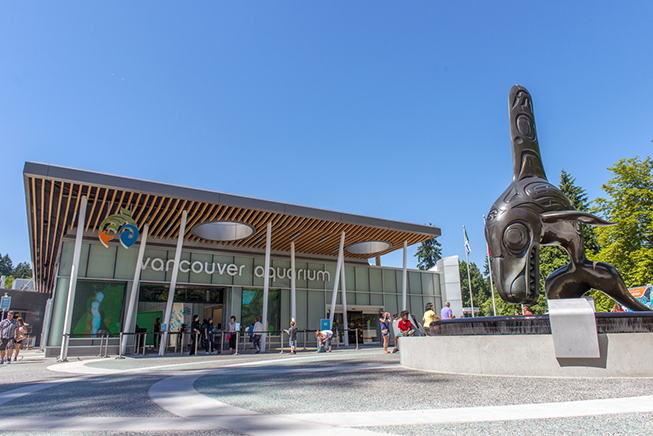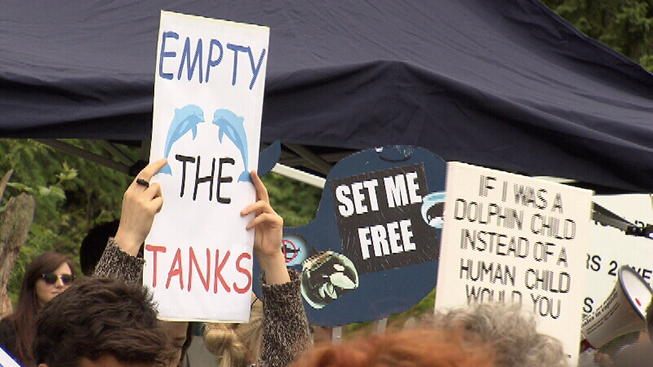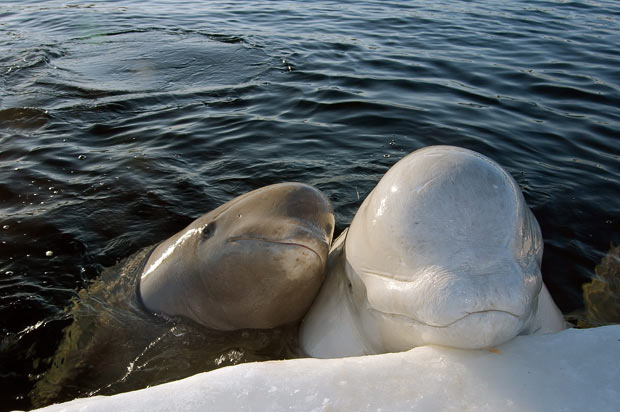The Captivity Debate: Should We Keep Marine Mammals in Tanks?

Guest blog written by Environmental Visual Communication student Adil Darvesh
In November 2016, Qila and Aurora, two Beluga whales at Vancouver Aquarium, died due to an unknown toxin in their tanks. News of their deaths added to an ongoing debate: Should humans keep marine mammals in captivity for the sake of education and entertainment?
Just six months later, the Vancouver Park Board amended a bylaw which will now ban captive cetaceans (all whales, dolphins, and porpoises). The Vancouver Park Board declined commenting for this blog, however, in the Vancouver Sun, Catherine Evans, Vancouver Park Board Commissioner, cites that over 1500 people were in support of these amendments. It is now illegal to “bring a cetacean into a park” or present a “show, performance or other form of entertainment which includes one or more cetaceans”. These bylaw changes pose a concern for the Vancouver Aquarium – currently the only facility that houses cetaceans in the Vancouver parks.
- The Vancouver Aquarium is part of a larger organization called OceanWise; a non-profit conservation organization focused on increasing the understanding and appreciation of the world’s oceans through education, engagement and research.
- The Vancouver Park Board's mission is to provide, preserve, and advocate for parks and recreation services to benefit all people, communities, and the environment.

This ban will directly affect:
- A $45 million facility upgrade that has already been invested in
- The Marine Mammal Rescue Centre and its ability to rehabilitate cetaceans
- Ongoing research that provides information on cetacean behaviour and biology
The Aquarium is concerned about how these new bylaws will impact their work on marine mammal rescue and welfare, because this ban would not allow them to properly care for injured cetaceans. “The proposed ban would result in euthanasia for stranded cetaceans along our coastlines,” remarked John Nightingale, CEO of the Vancouver Aquarium in a statement to the Vancouver Courier. Without the ability to bring cetaceans into the Marine Mammal Rescue Centre facilities, the Aquarium would be forced to let those cetaceans die. On the Vancouver Aquarium AquaBlog, Stephanie L. King, PhD and Research Fellow at the University of Western Australia, wrote that rescuing and caring for cetaceans that are un-releasable into the wild is the humane thing to do. “Marine mammal injuries and fatalities are a direct result of human impact; Vancouver Aquarium offers us an opportunity to highlight these issues and help educate people and promote best practice when people encounter marine mammals in the wild.”
The Vancouver Park Board and the vocal advocates against captive cetaceans have concerns of their own. Catherine Evans, wrote in the Vancouver Sun: “The fact is that there have been only six cetaceans brought into the rescue centre since 2011. Five were harbour porpoises, one a false killer whale. Of the five porpoises, three died, one was treated and released…and one, Jack, was brought into the aquarium in 2011 as an infant. He died there in 2016.”

Studies show that those with minimal conservation knowledge are more likely to learn something and therefore more likely to increase their concern about wildlife conservation after visiting institutions such as aquariums and zoos. The ban would negatively impact the Vancouver Aquarium and members of the public who would miss out on a personal encounter with ambassadors of the cetacean biodiversity from our oceans. Emotionally connecting with animals and gaining deeper knowledge about them is one of the foundations of effective conservation efforts. By keeping cetaceans in excellent care, the Aquarium can foster these connections with over 1 million annual visitors. This also provides better research models for marine mammal scientists who work on cetaceans.
“I’m sure they’ve seen it in their textbooks and their teachers have talked about it, but the value of the real thing is just incredible. When you see those lights coming on and that real excitement and that connection happening, that’s my fuel.” – Dolf DeJong, General Manager Vancouver Aquarium
On the flipside, cetaceans have extensive social structures that are interrupted when they are kept in captivity. Keeping them isolated from their family groups and pods can be harmful and cause their behaviour to change. This makes it difficult for pursuing reintroduction into the wild. These animals thrive in vast open spaces where they can freely hunt or migrate from feeding areas to mating areas, and captivity dramatically restricts this mobility. In addition to social and mental well-being, captivity has also proven problematic for their physical health. Stress-related conditions like ulcers, as well as fungal, bacterial and viral infections are common in captive cetaceans.

Is it possible to have the best of both worlds? Both parties clearly want what’s best for these animals, but they are approaching it in different ways. Dr. Lori Marino, animal behaviour expert and president of The Whale Sanctuary Project, believes it’s possible. The Whale Sanctuary Project is a cordoned off seaside area that can house several orcas and/or beluga whales. She says: “We’re talking about orders of magnitude more space to swim than even the largest tank in a place like SeaWorld, more depth to dive but also more variability in their environment; a natural environment with the sky above them and fish and sea creatures in the area with them.” Like a nature reserve on land, whale sanctuaries could provide an interesting alternative to conventional aquarium tanks.
This debate continues to engage all parties as the bylaw is under review by the B.C. Supreme Court. The results of this will have implications throughout Canada by setting a precedent for aquariums and zoos throughout the country on the display of certain animals. With two additional hearings set for December 2017, this case is one to follow.
If you’re interested in learning more about other discussions in the wildlife conservation world and exploring these debates through photojournalism and gorgeus imagery from around the world, visit the 2018 Wildlife Photographer of the Year exhibition at the ROM, opening this weekend on December 16th, 2017.
